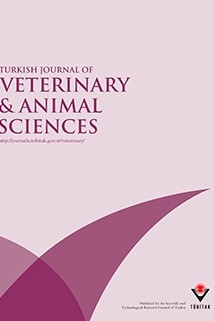
Turkish Journal of Veterinary and Animal Sciences
Yazarlar: Hasan ATALAY
Konular:-
Anahtar Kelimeler:Nutritional diseases,Milk yield,Total mixed ration,Body condition score
Özet: The purpose of this study is to examine the effects of body condition score (BCS) on nutritional diseases and milk yield in dairy cattle. Fifty-nine randomly selected Holstein Friesian cattle, lactation numbers 3-6, were used in this study from a total of 350 dairy cattle in the establishment. All of the cows in the study were fed with the same total mixed ration (TMR), and BSC was determined by inspection and palpation in the first 5 days after calving. The cows were separated into two groups according to their BCS score as BCS ≤ 3 and BCS > 3, and Group 1 contained 36 cows (BCS ≤ 3), while Group 2 contained 23 cows (BCS > 3). One-month, 3-month, and 305-day milk yields and nutritional diseases as observed until postpartum day 35 have been determined in this study. Moreover, TMR analysis has been performed. As a result, the 1-month, 3-month, and 305-day milk yields were determined in Group 1 (BCS ≤ 3) and Group 2 (BCS > 3), and no difference was determined between the groups (P > 0.05).